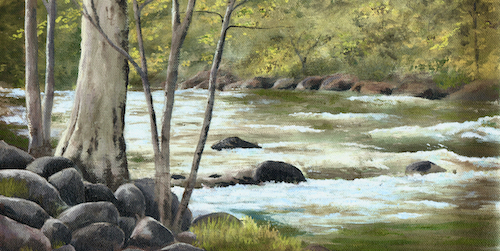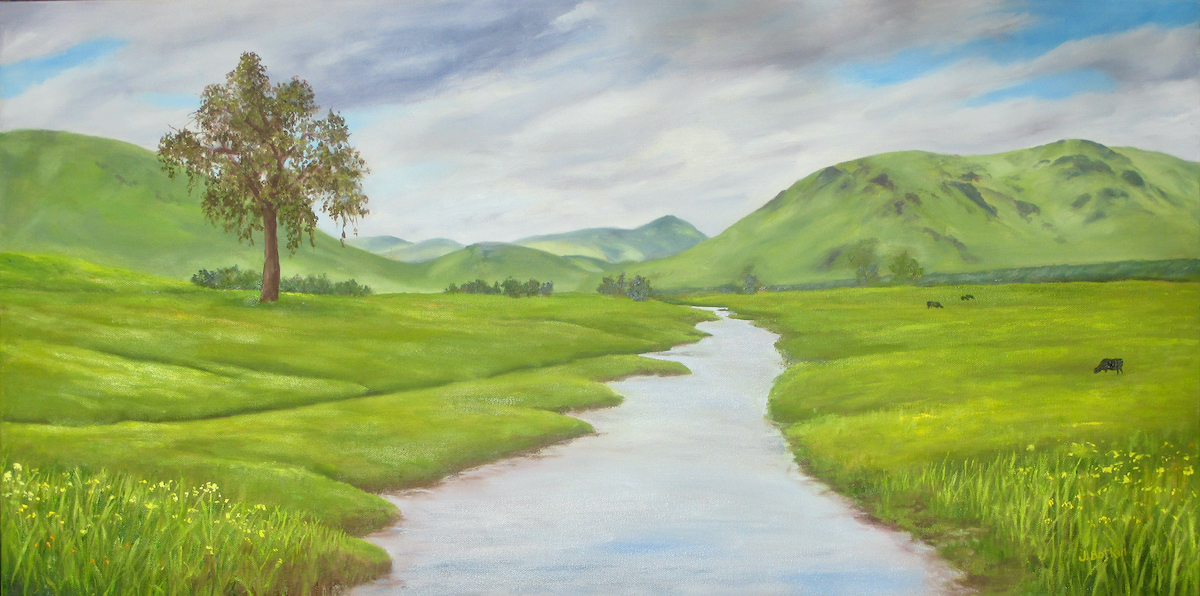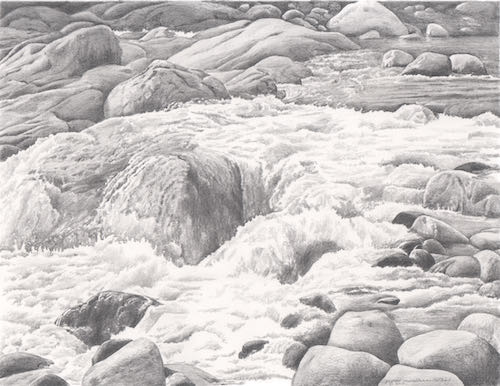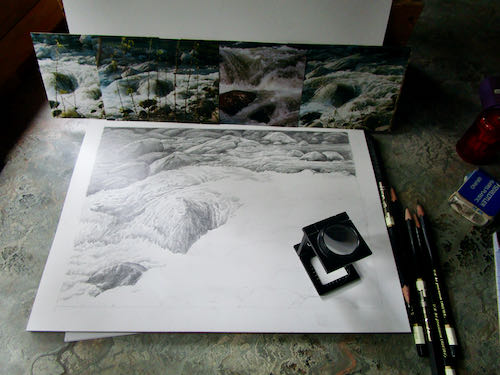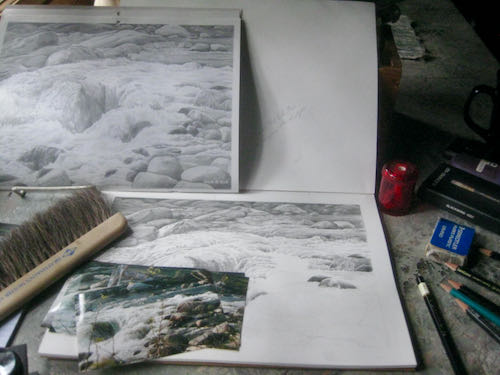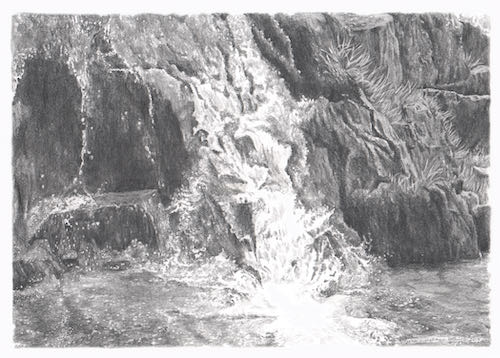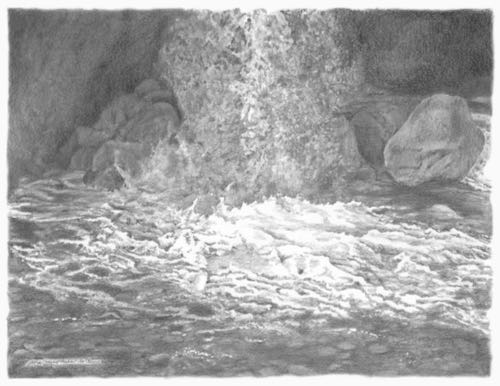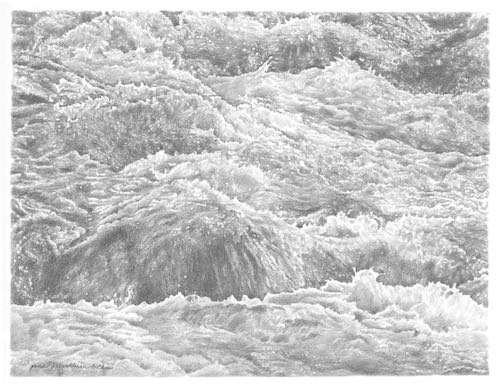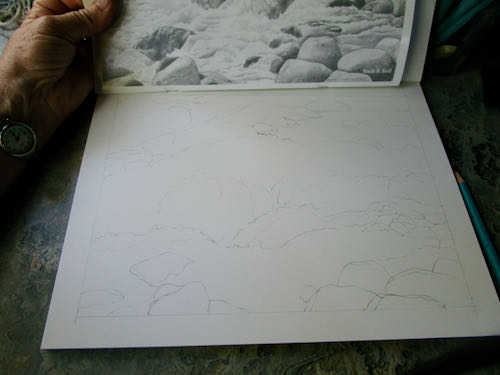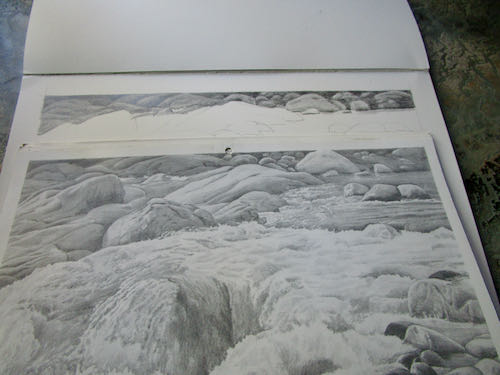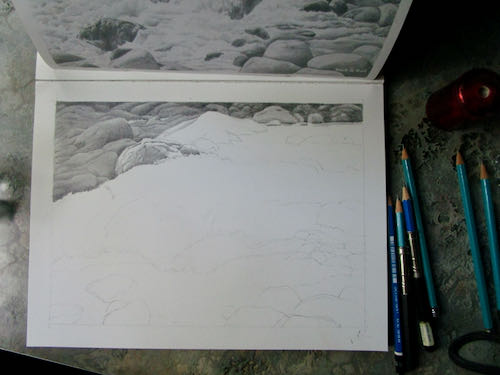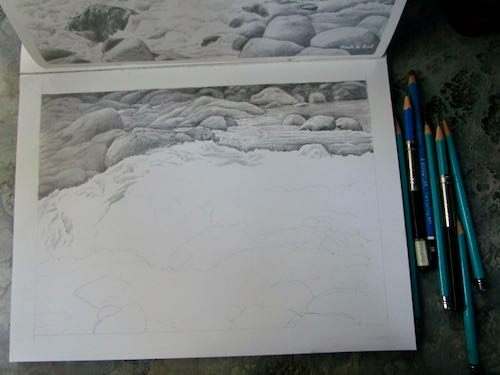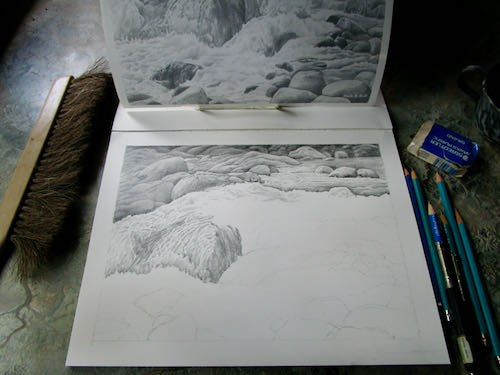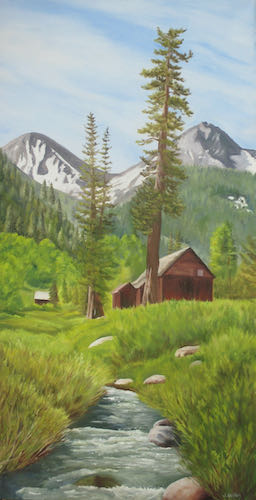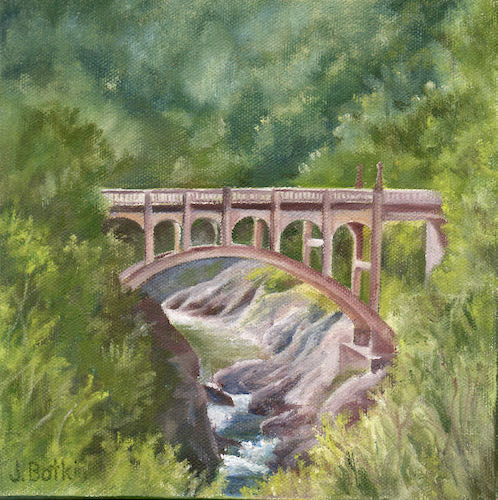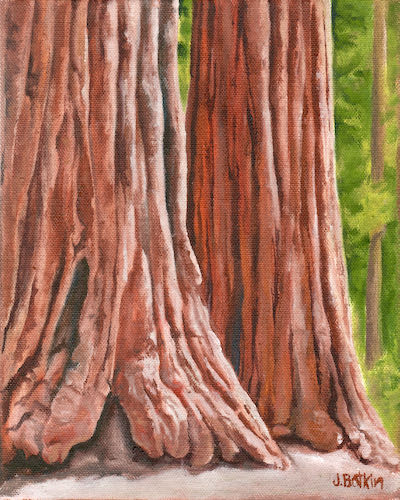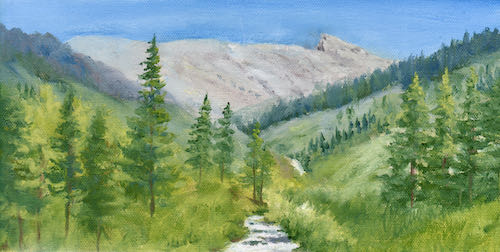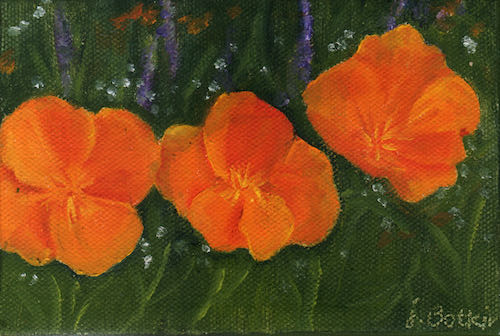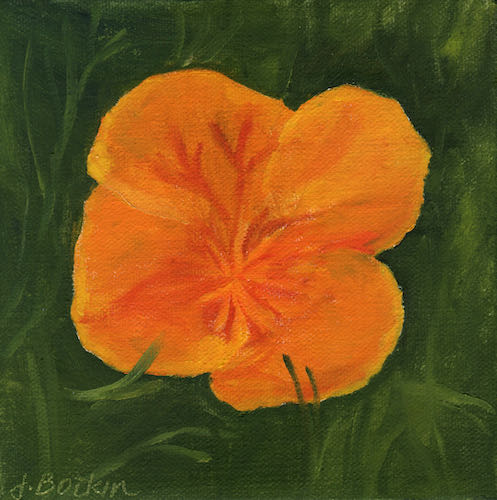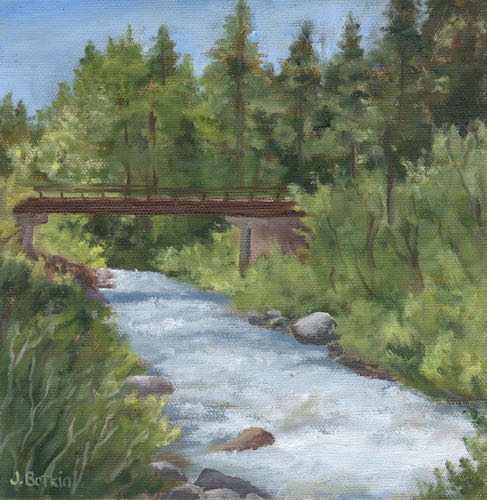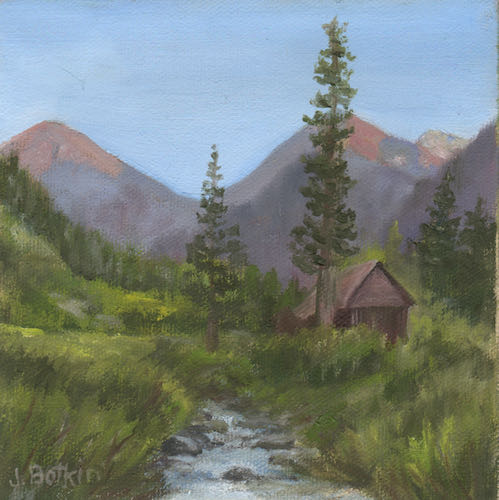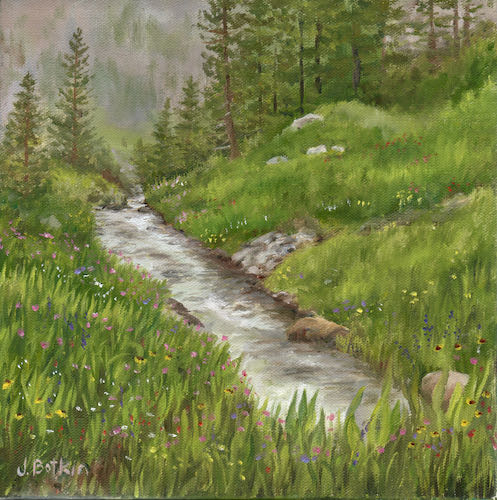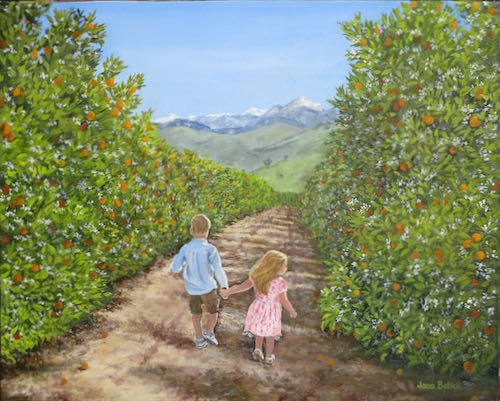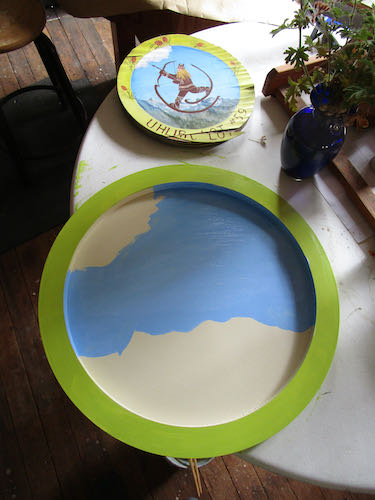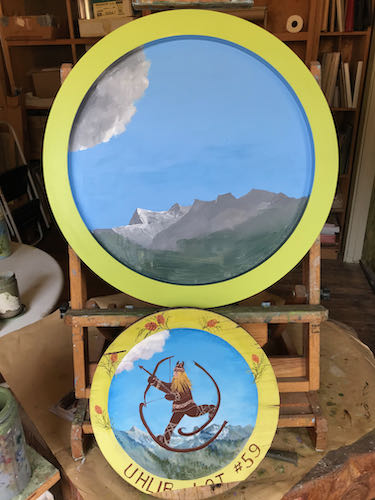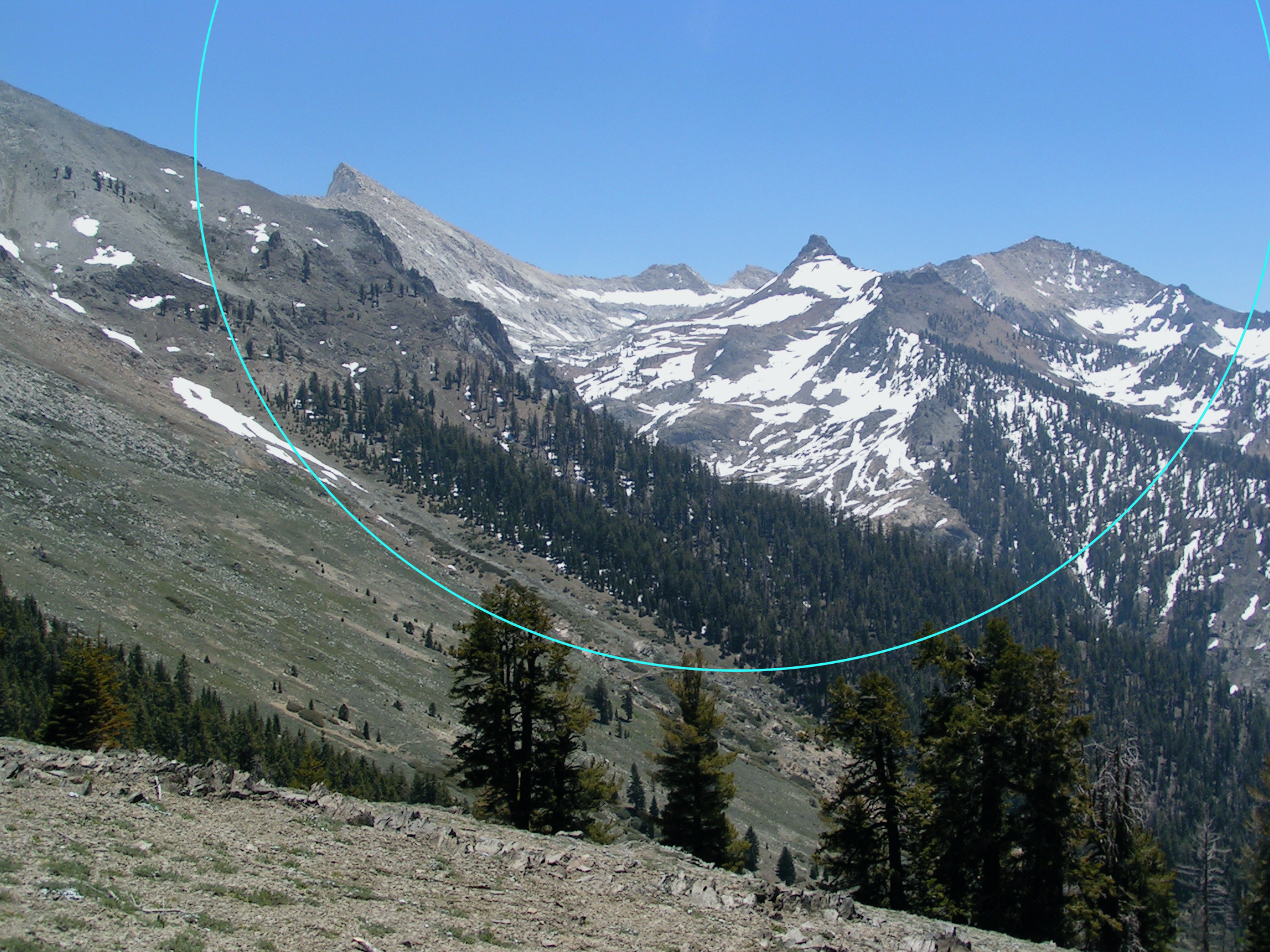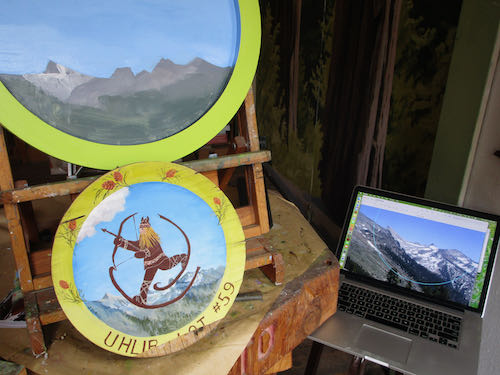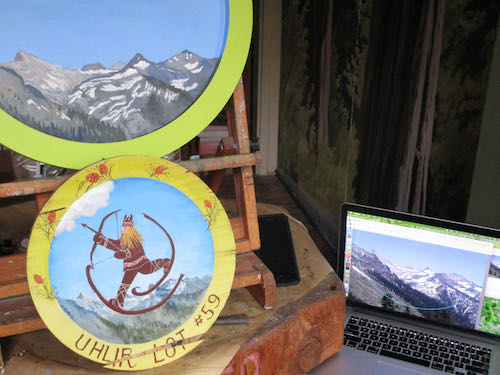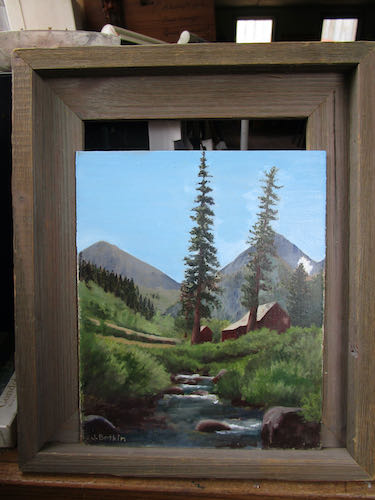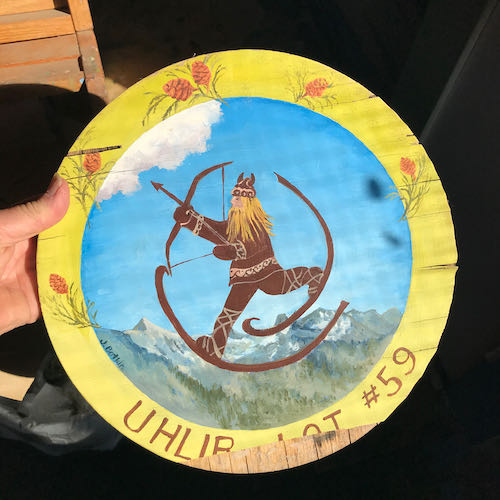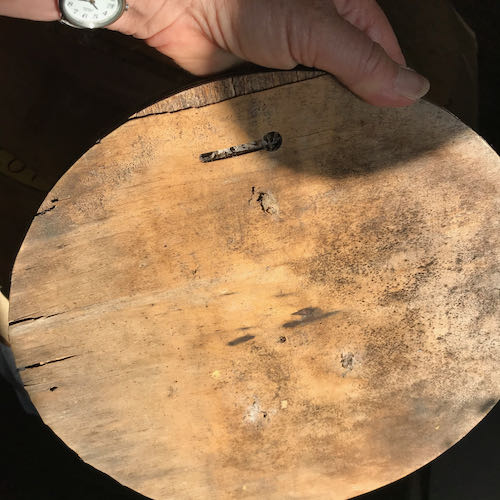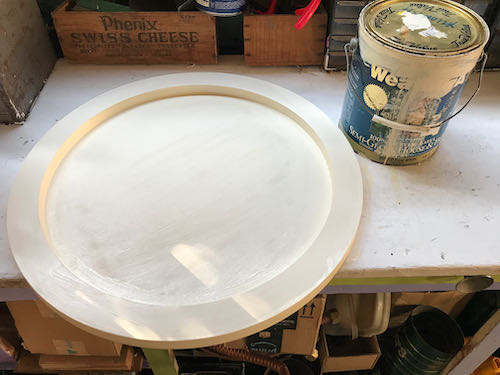This is not ideal for mural painting, particularly in contrast my last experience painting at Mooney Grove on a north-facing wall in February and March.
Realizing that the entire day would have strong hot sunshine on the wall, I determined to finish it in one day instead of the prescribed four. I knew it might possibly take 2 days, but I was focused, locked and loaded, ready to rock and roll, and whatever other cliché you can find.
This will be one day of painting and two days of posting.
First, let me be clear about something: I am Very Thankful to have been chosen to do this job and at the same time, I wished it could have been done at home in my studio with these creatures hanging around. (Pippin is barely visible in the bushes, and Jackson appeared after I took this poor photo).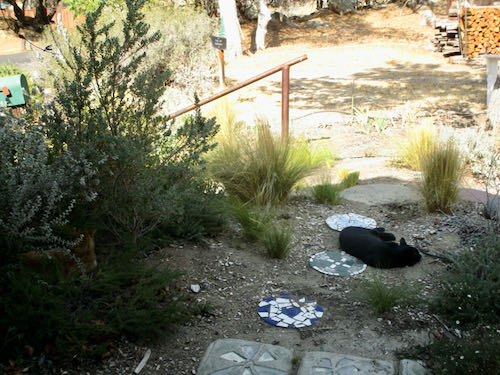
Alas, sometimes an artist has to go out into the world, kill something, and drag it home to the cave. (Don’t get worked up—it is only a euphemism for doing work away from home.)
Instead, I saw this creature. Mooney Grove is known for its peacock population, although now there are way more Canada geese. Fortunately, they were not in mating season or hanging around my location like the last Mooney Grove mural.
Hello, restroom. I was happy to see some shade. I didn’t know what was coming.
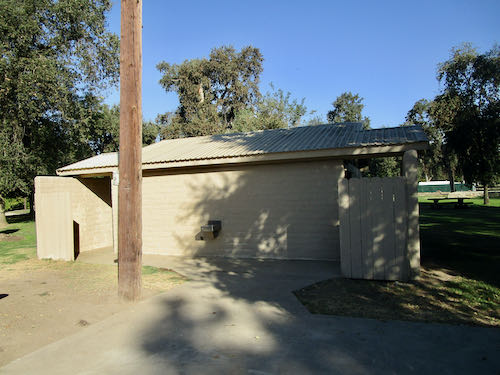
There were domestic geese waiting for me to set up, and very very bold about it.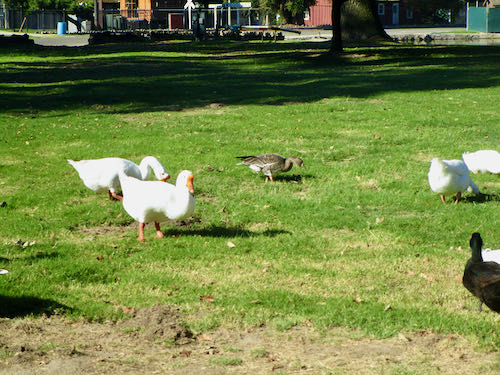
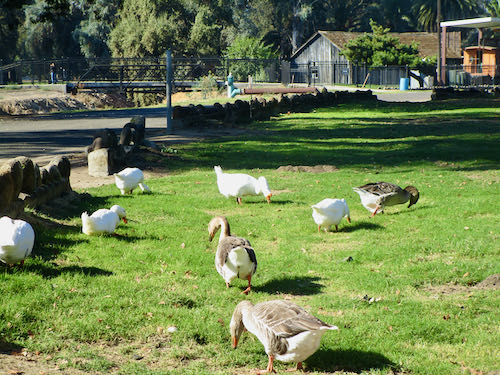 9 a.m. and it was already hot in the sun.
9 a.m. and it was already hot in the sun.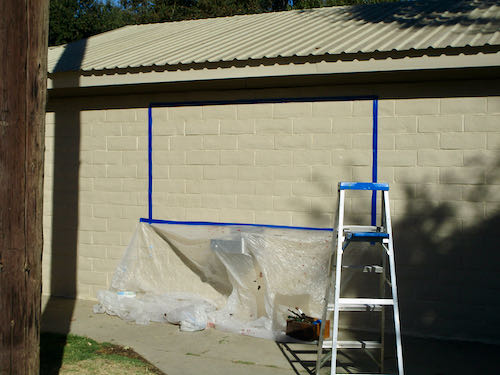 HEY! BUG OFF!
HEY! BUG OFF!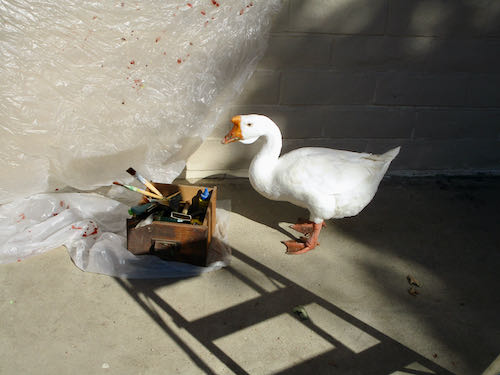
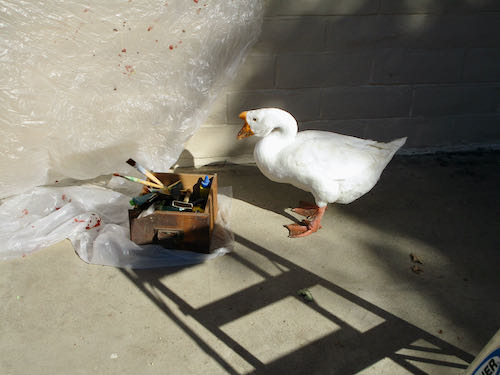 Apparently he had a conference to attend, so eventually he waddled away.
Apparently he had a conference to attend, so eventually he waddled away. 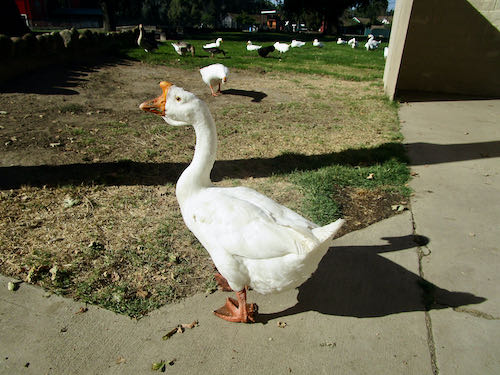
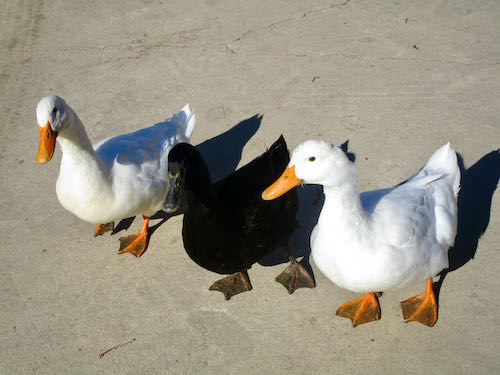
Let’s get to work. You guys too.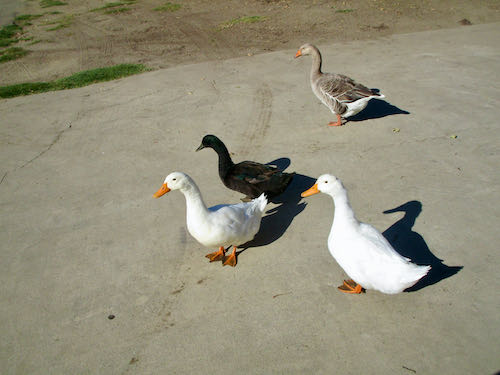
Farthest thing first – the sky. I didn’t have a colored copy of the painting that I submitted to the committee, so I was trying to recreate the scene using the original photos and a very poor pale copy of the painting.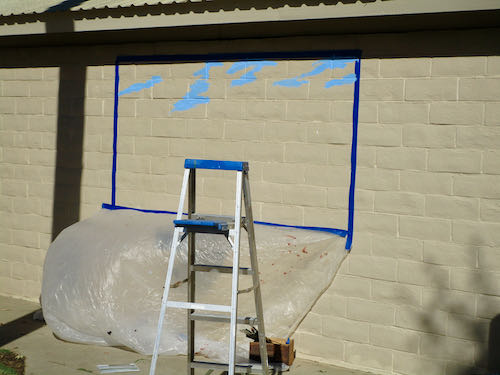
Now it is in total sun, with the power pole shadow working its way across. I decided to put base coats on each segment, then return for detailing, rather than trying to complete each section as I went.
After applying blocks of color to each section and trying to squish the paint into the holes in the concrete block, I had to figure out how to proceed. The plan of attack: stand in the shade, plan the next move, decide the necessary colors, quickly grab the paints and brushes, sprint to the wall, and slam out the next small segment before running back to the shade to evaluate my work and figure out the next steps.
Watch the shadow of the pole move across. I kept dragging my crates of paint to the shadow as it inched to the right.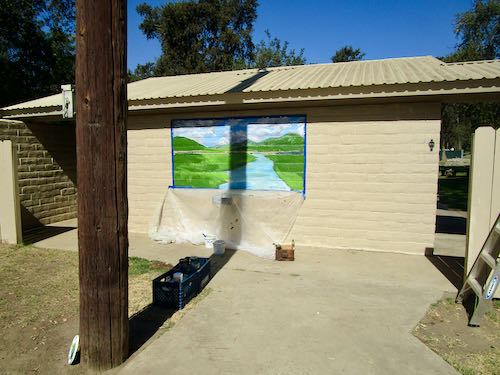
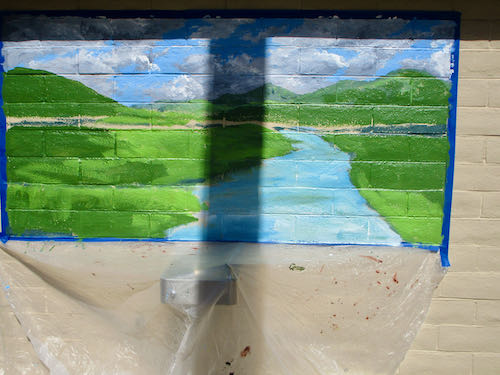
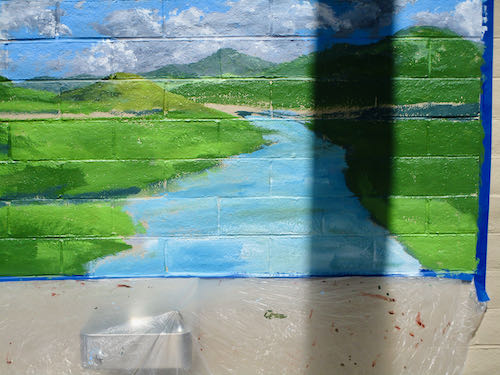
I ran out of water, and 2 wonderful park maintenance men brought me 4 bottles!! 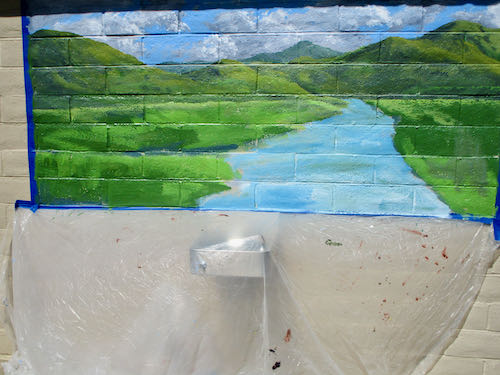
I finally realized that I couldn’t hold the palette, brush, and the photo, so I taped it to the wall. Sometimes I don’t want to do that because the tape causes the fresh paint to peel. This paint stopped being “fresh” about 20 minutes after application.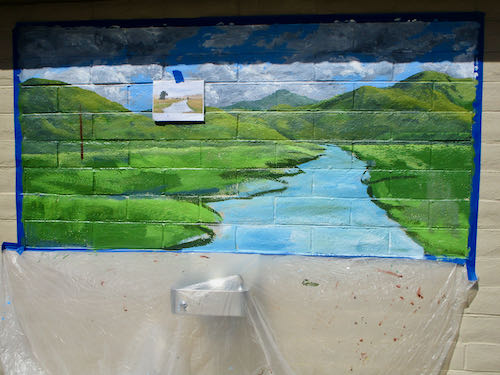
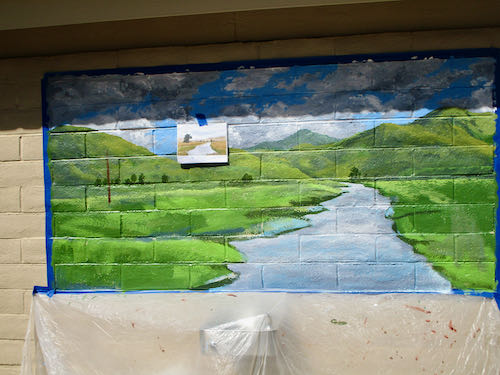 The maintenance men eventually brought this sign.
The maintenance men eventually brought this sign.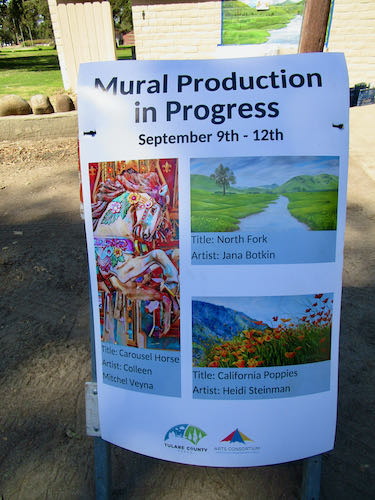
They also gave me permission to cross out the incorrect title. I didn’t bother with the incorrect dates, but I did add an “L” to Colleen MitchelL Veyna’s name.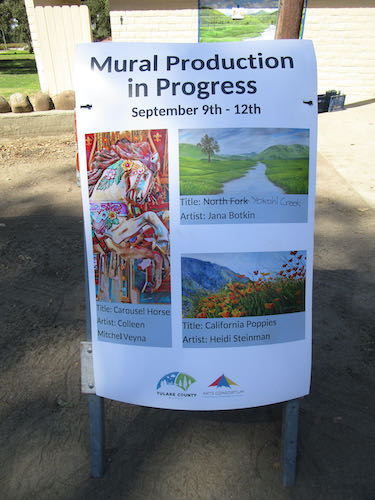
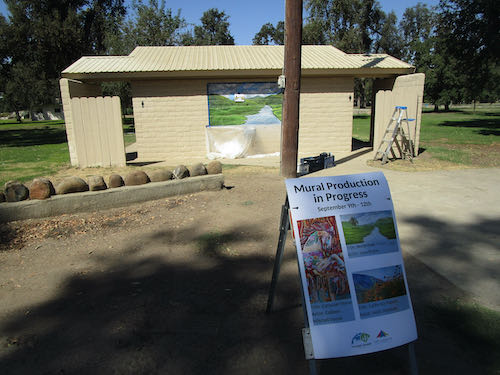
Just rewriting this makes me almost collapse from the memory of heat. We will continue tomorrow with the rest of the very hot day of painting a mural on a south-facing wall in September at Mooney Grove Park.
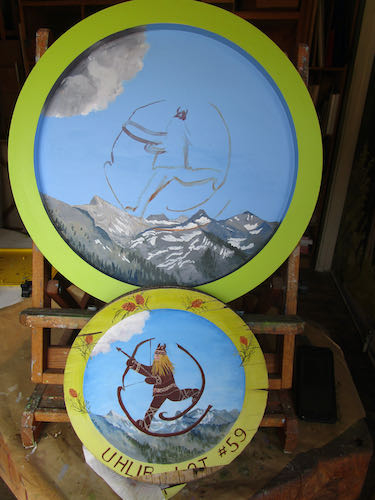
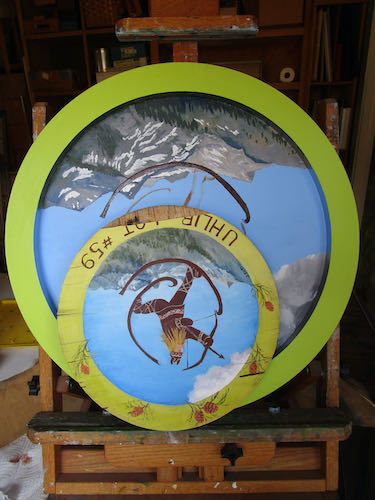
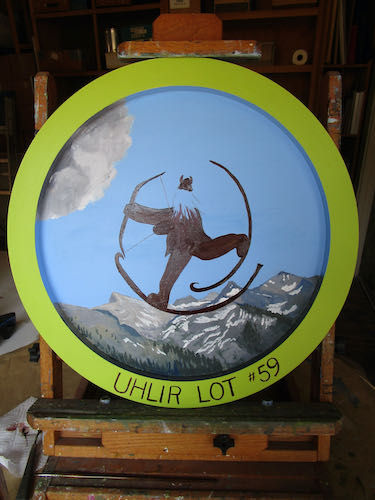
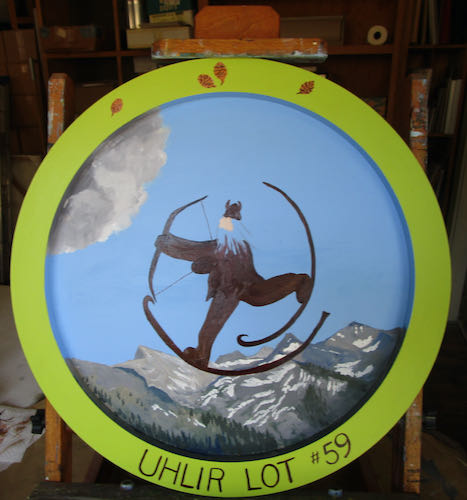
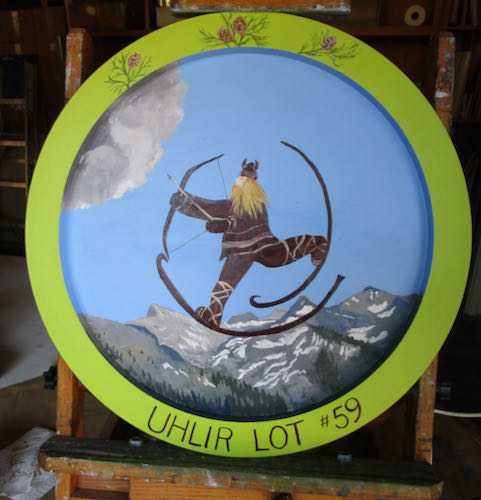
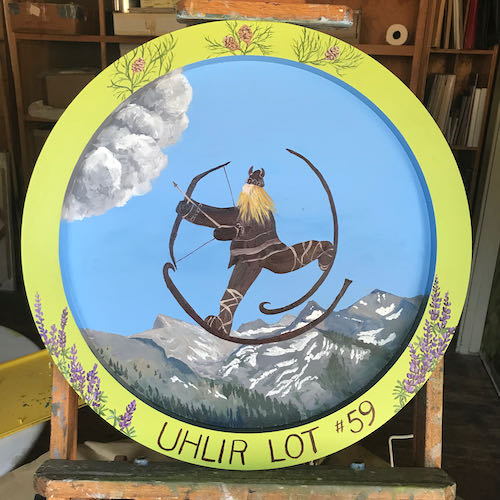
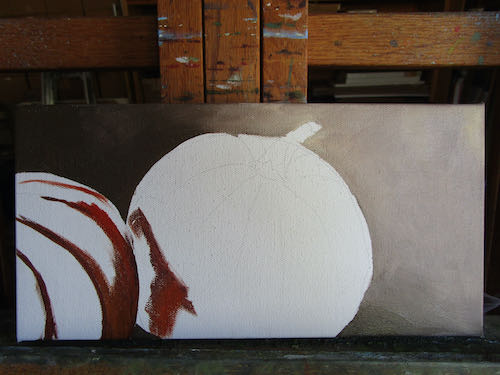
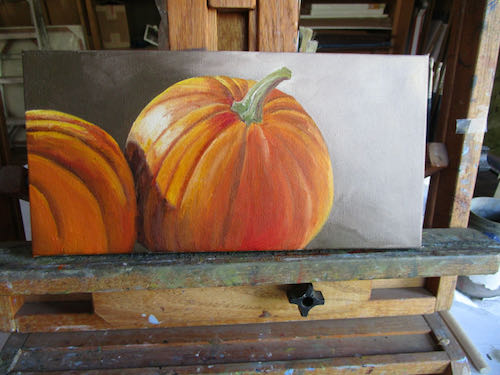
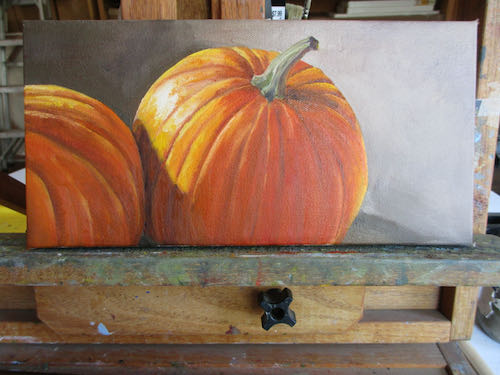
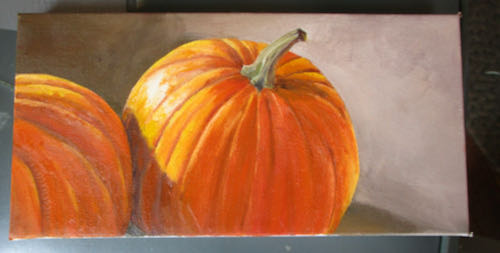
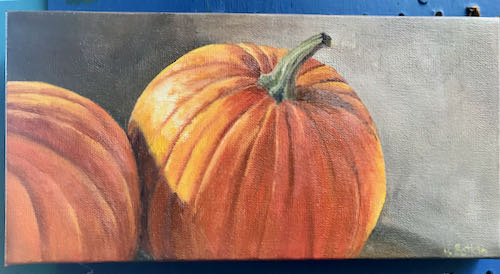
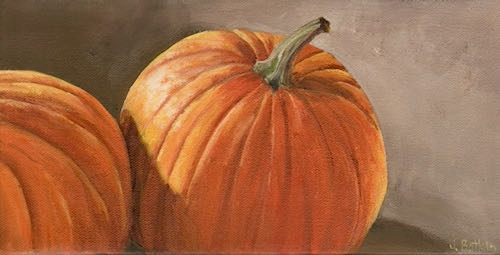
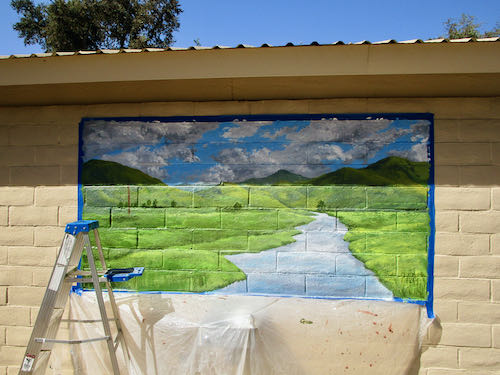
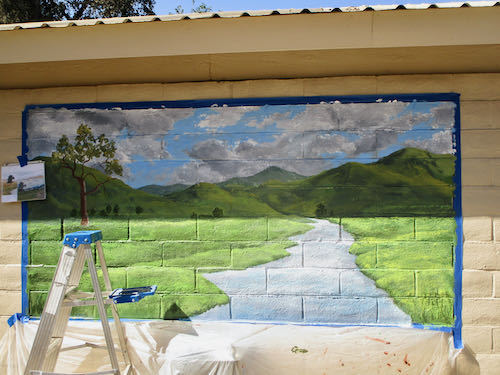
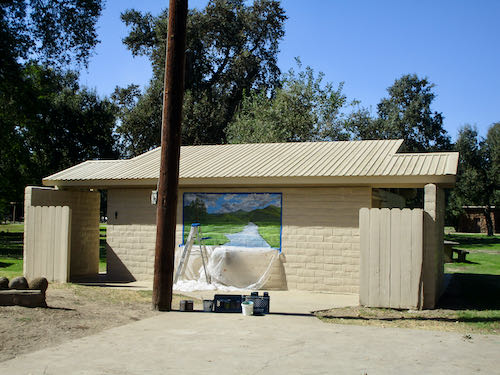
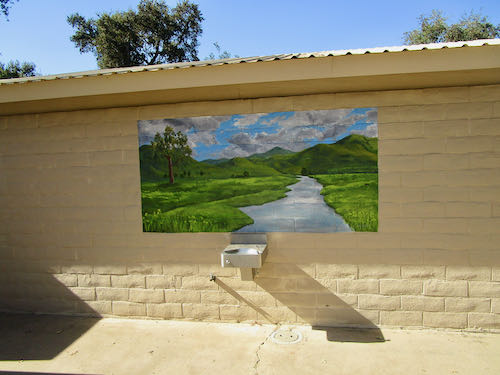
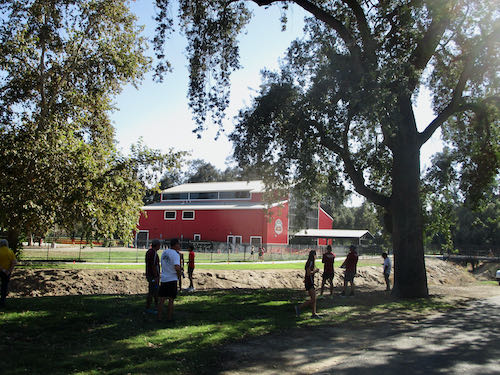
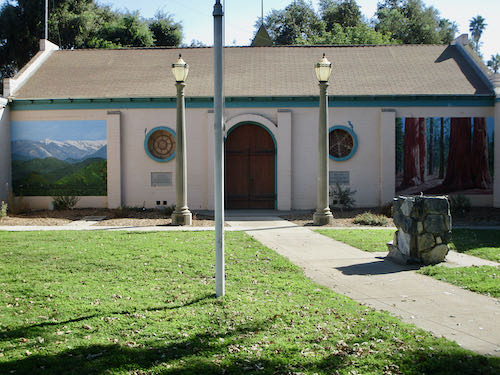
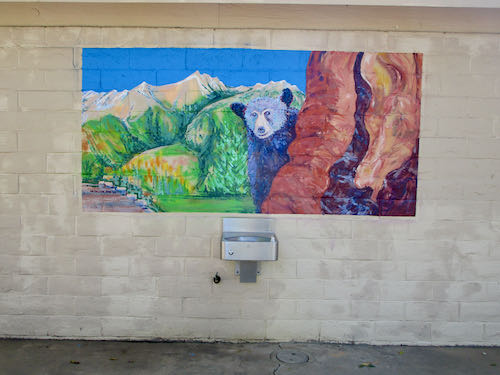
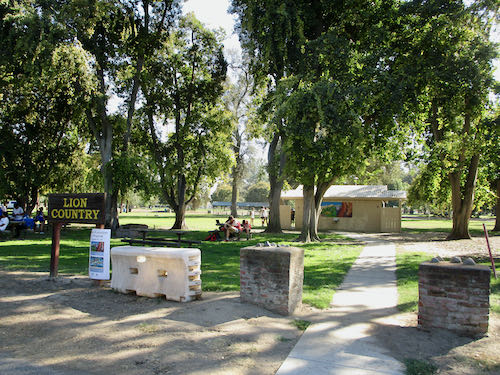
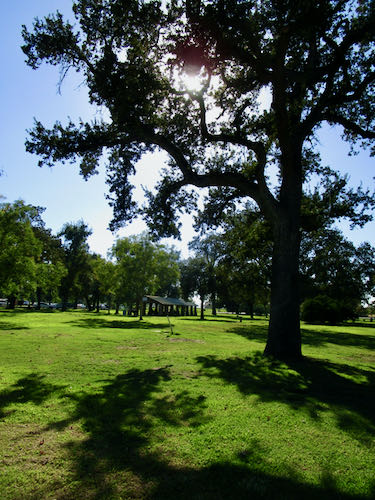
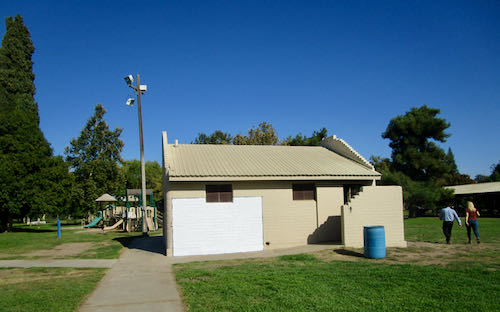
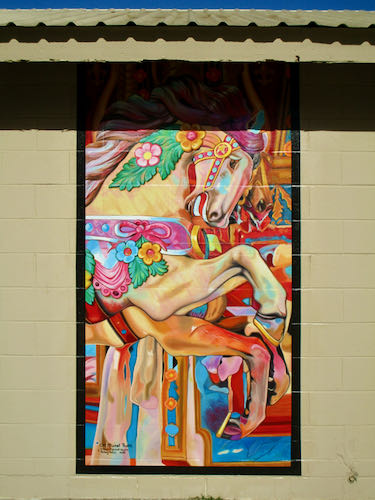
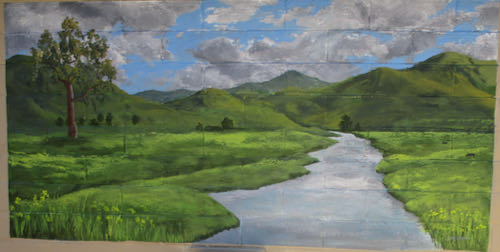
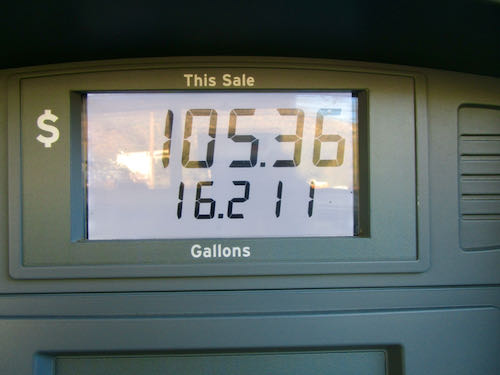




 9 a.m. and it was already hot in the sun.
9 a.m. and it was already hot in the sun. HEY! BUG OFF!
HEY! BUG OFF!
 Apparently he had a conference to attend, so eventually he waddled away.
Apparently he had a conference to attend, so eventually he waddled away. 








 The maintenance men eventually brought this sign.
The maintenance men eventually brought this sign.


